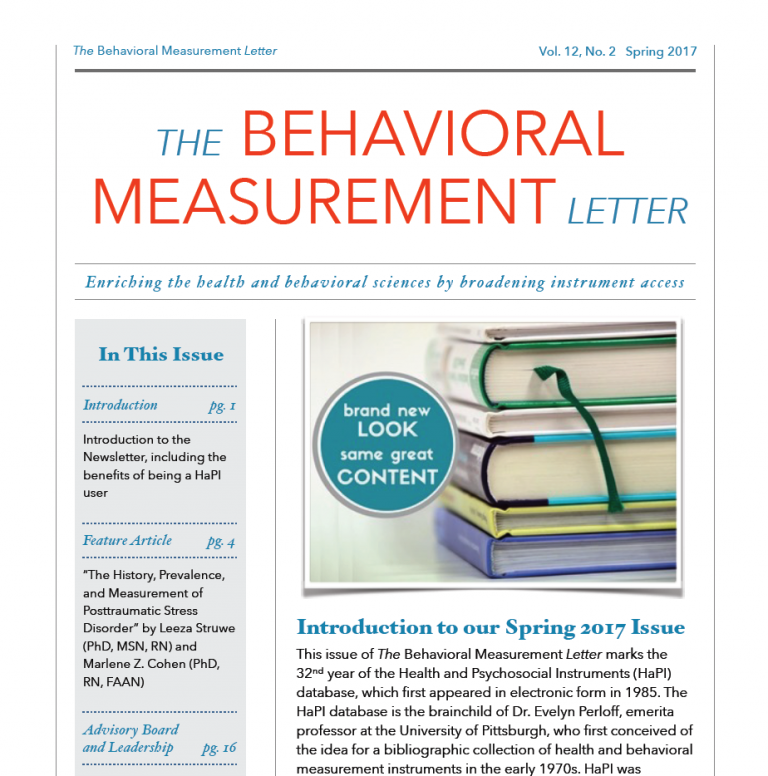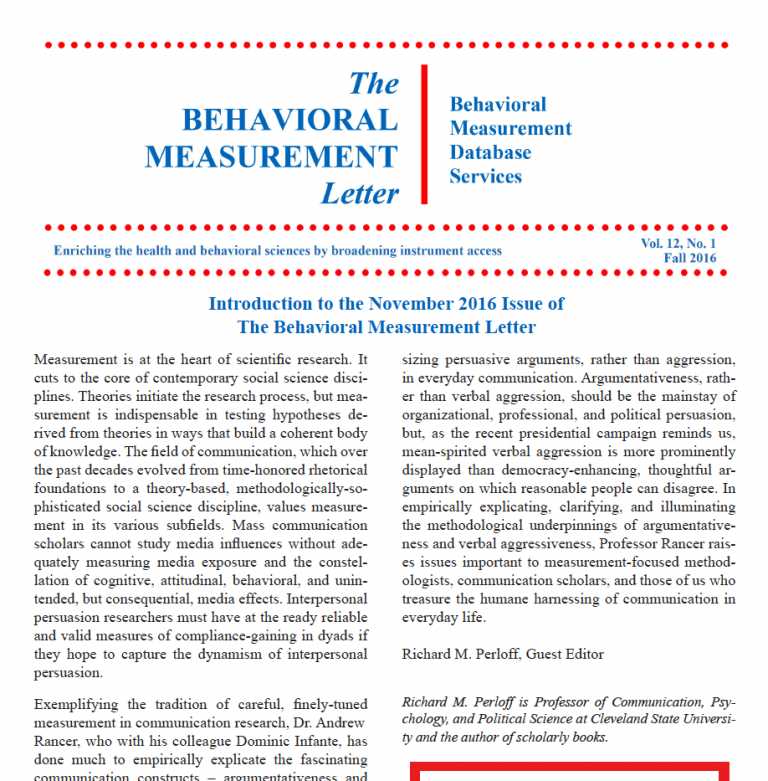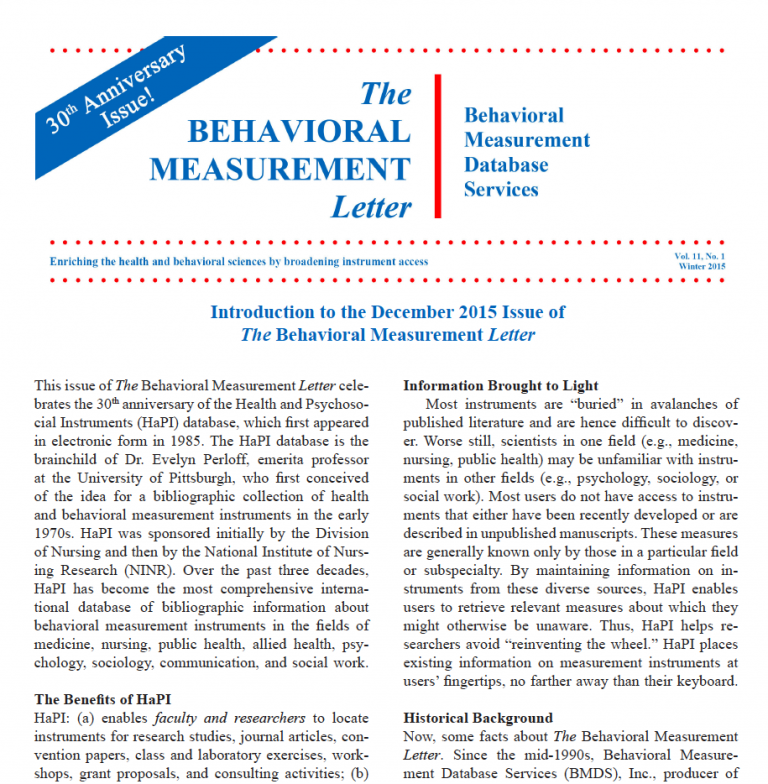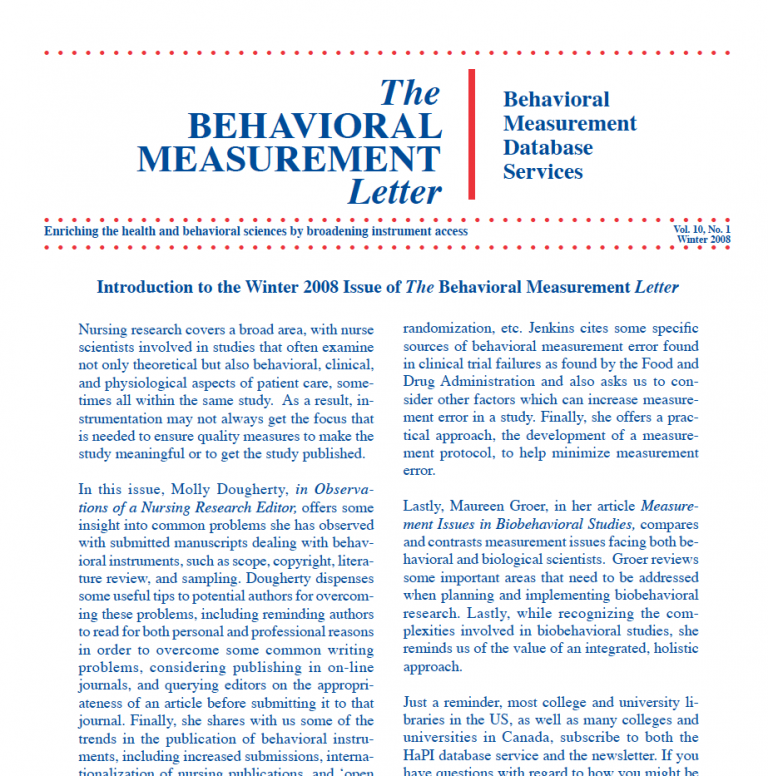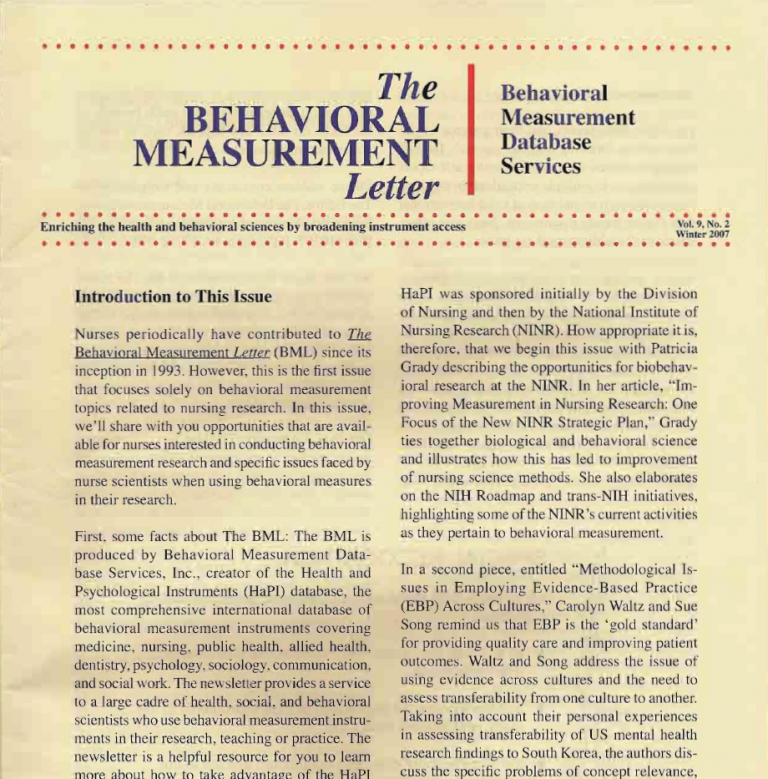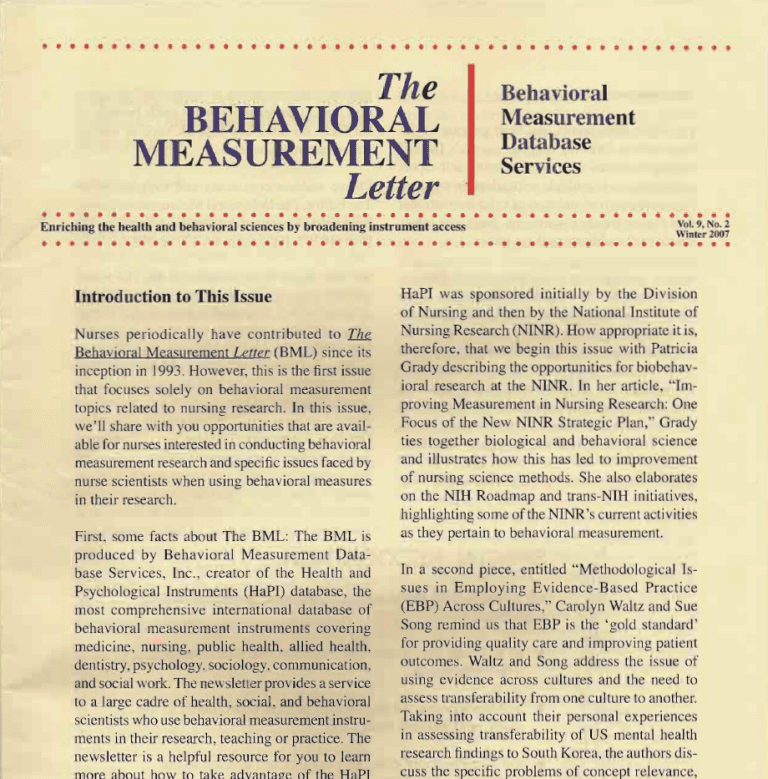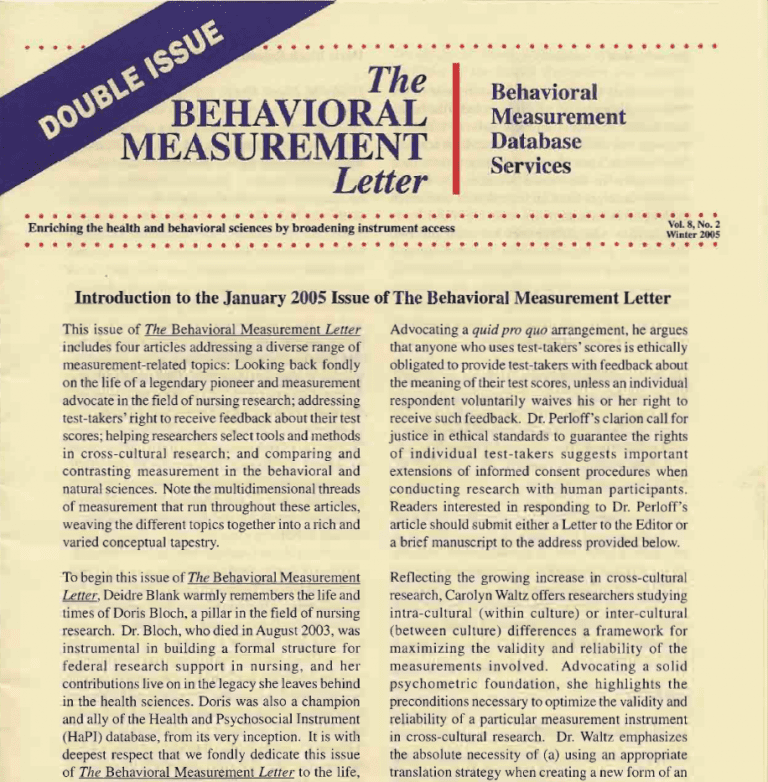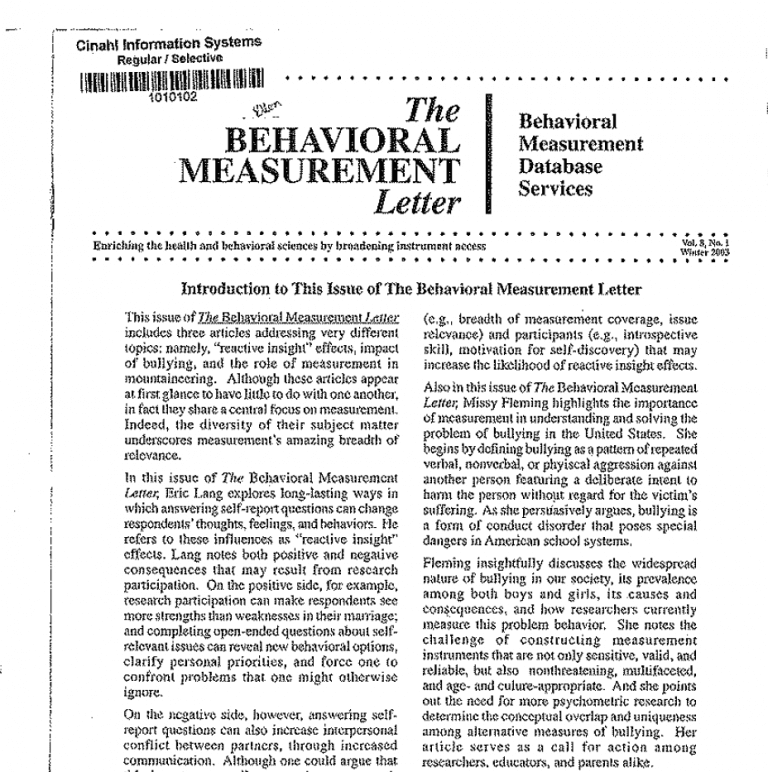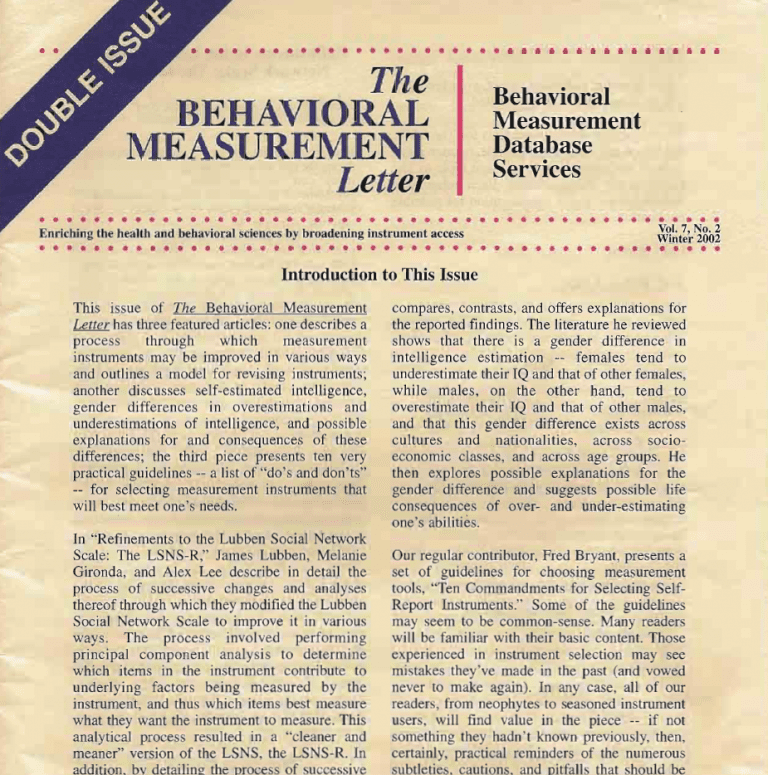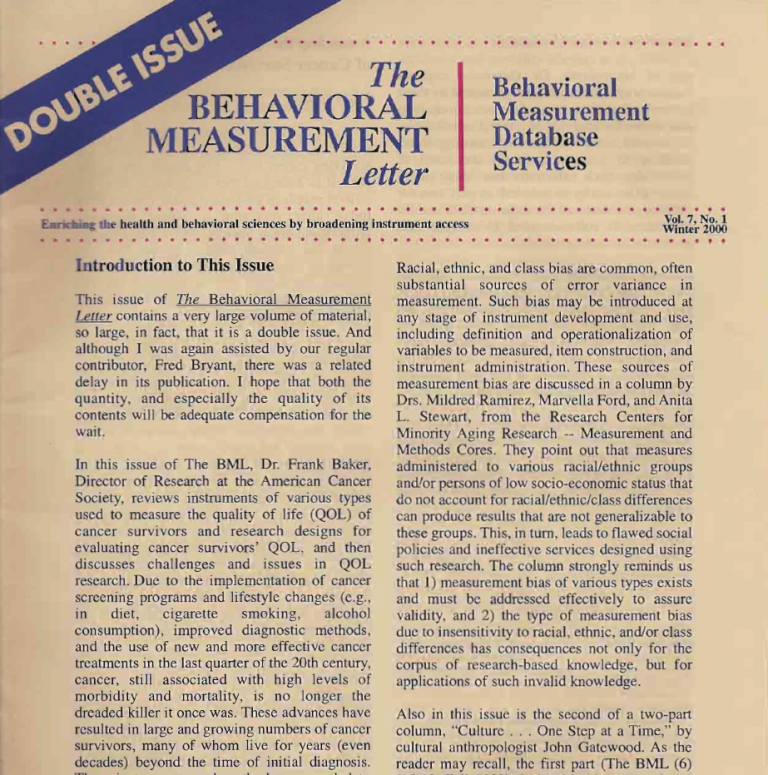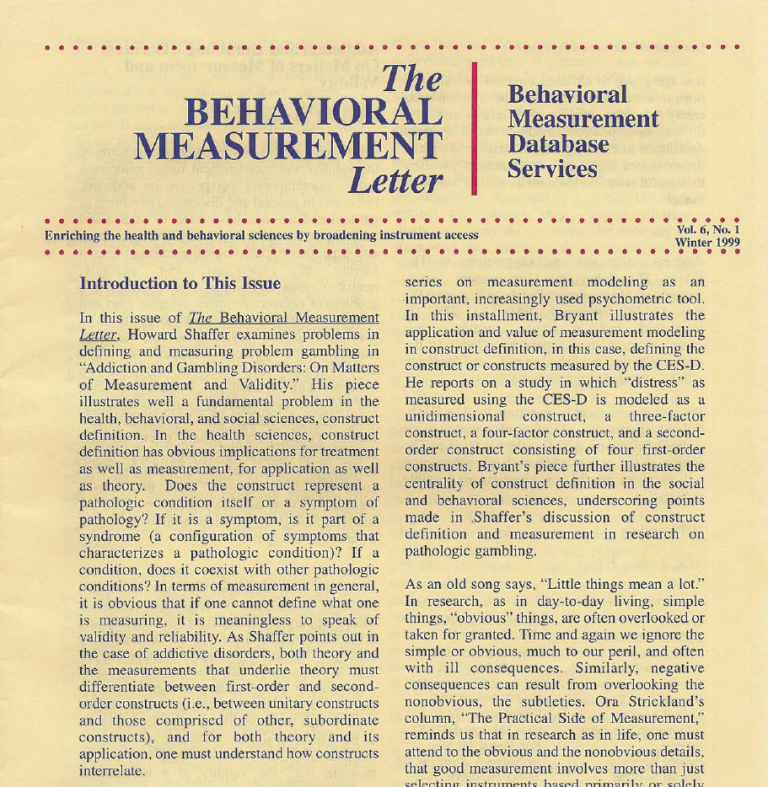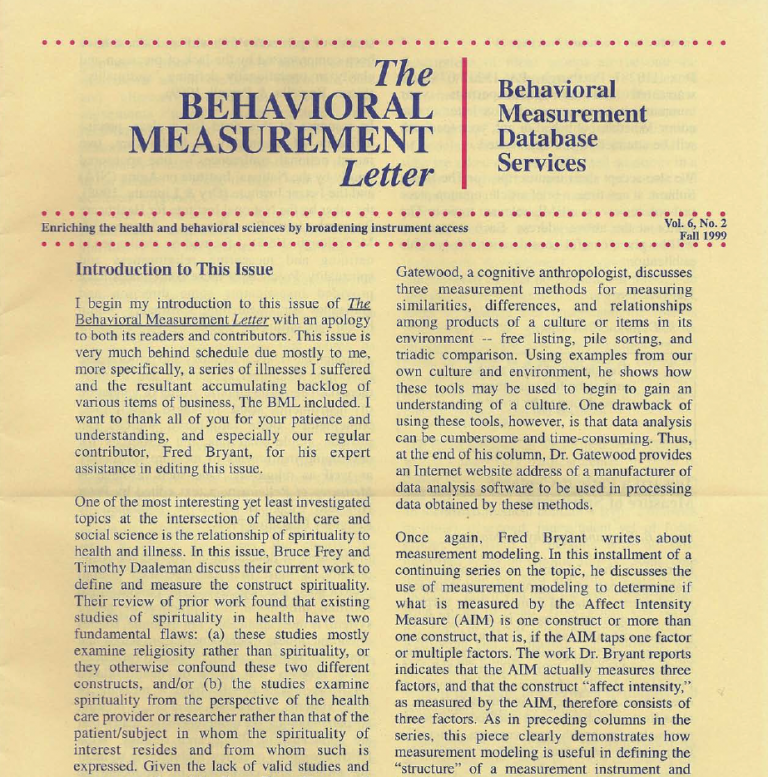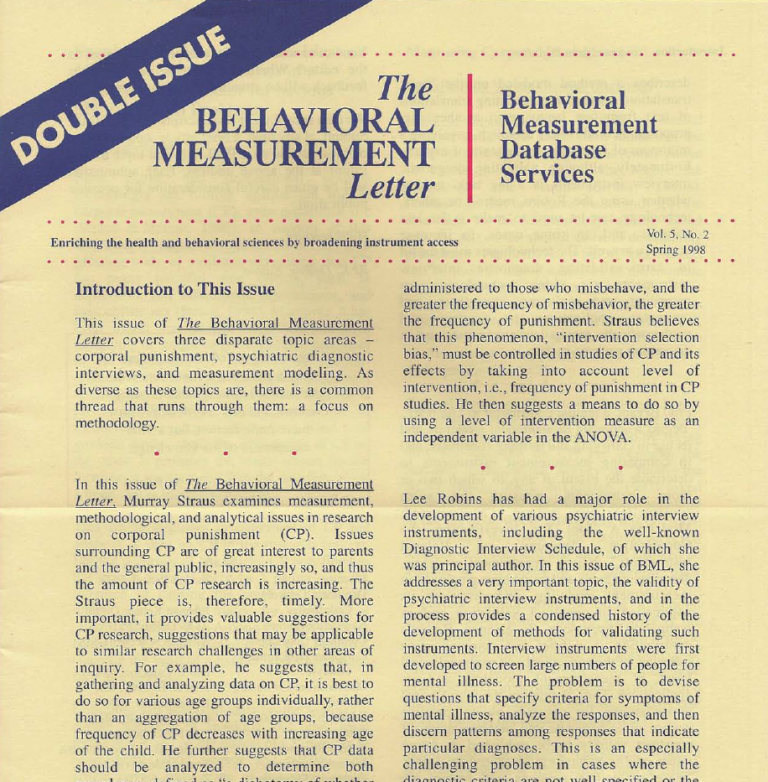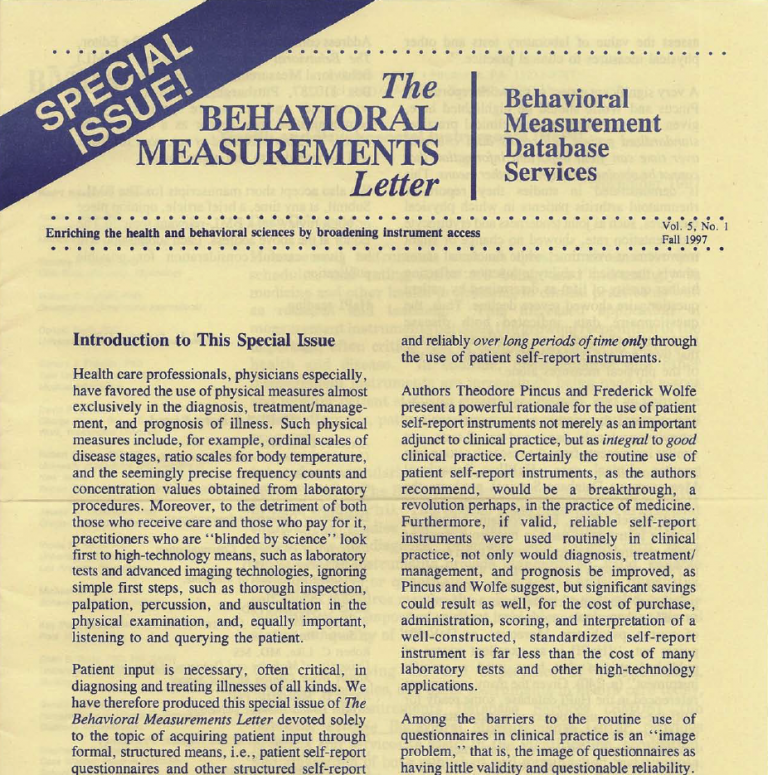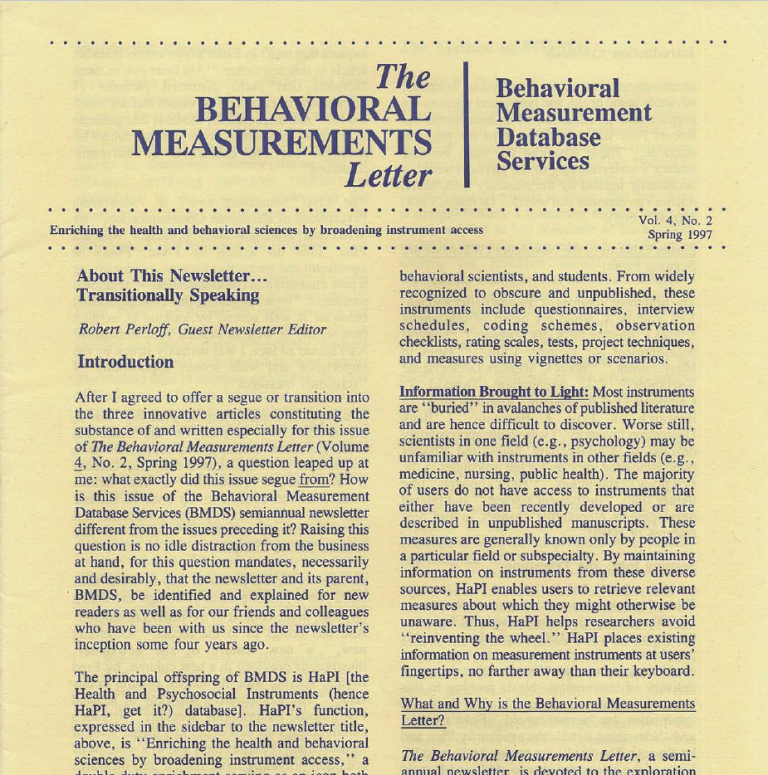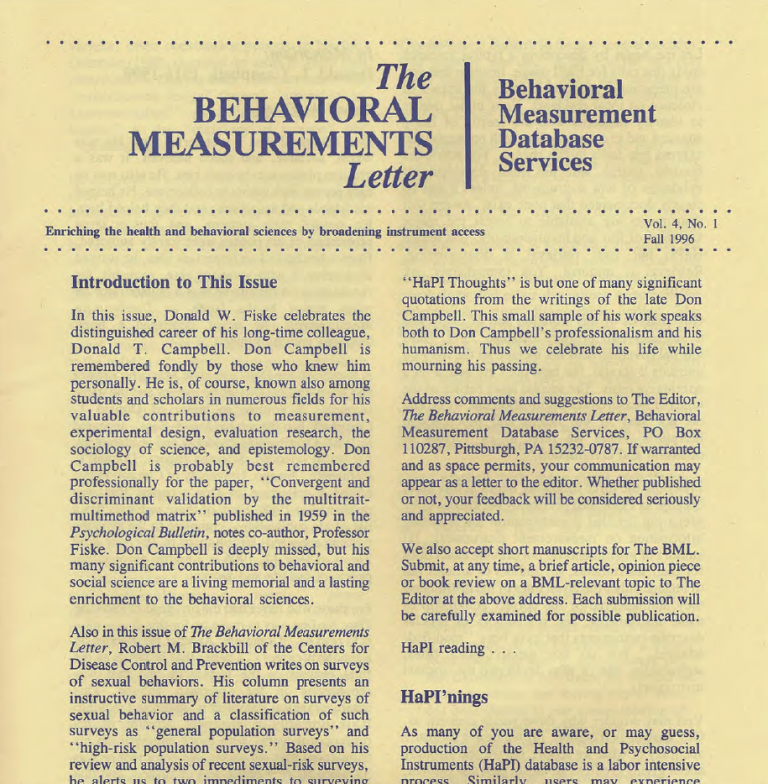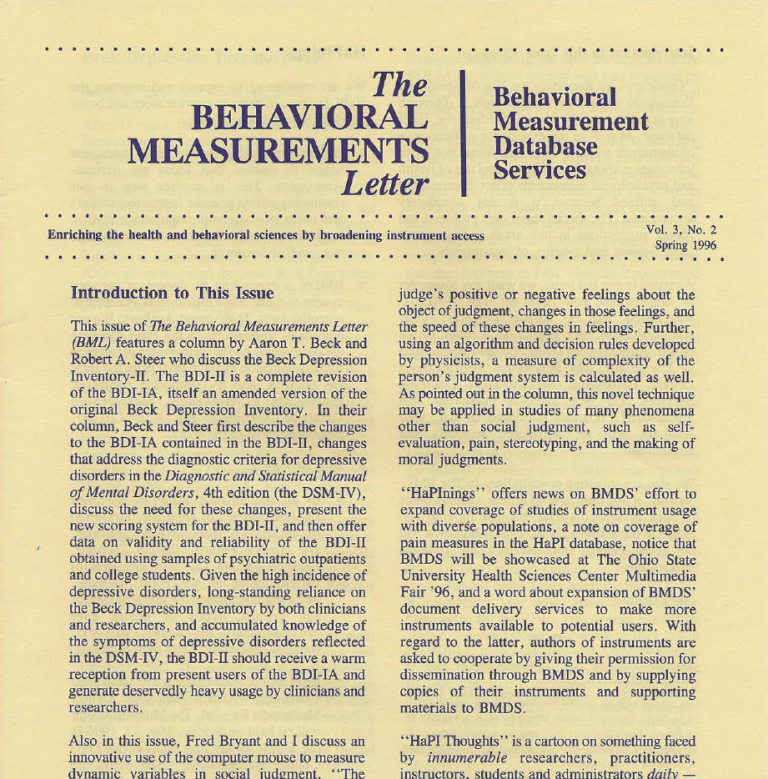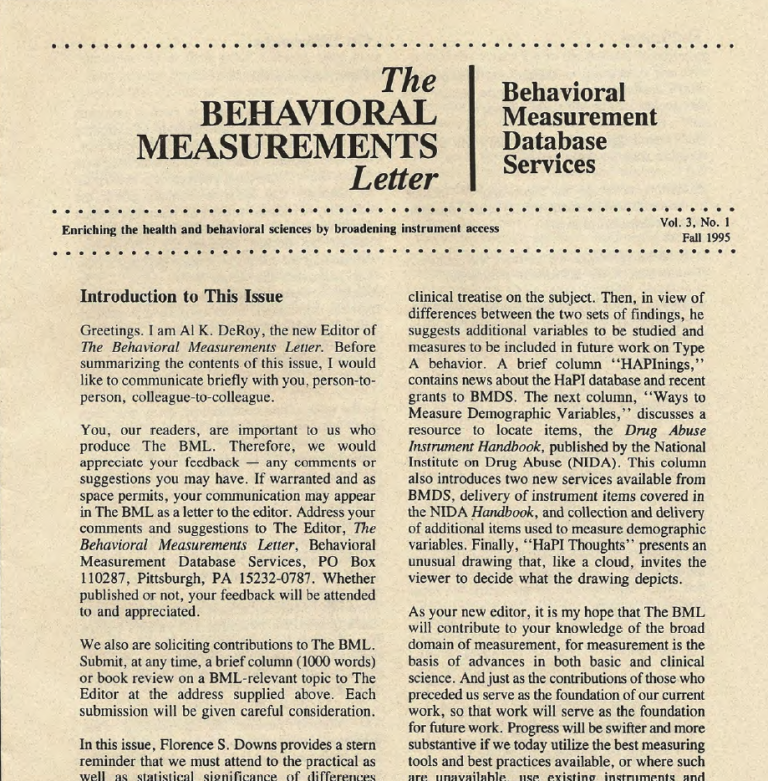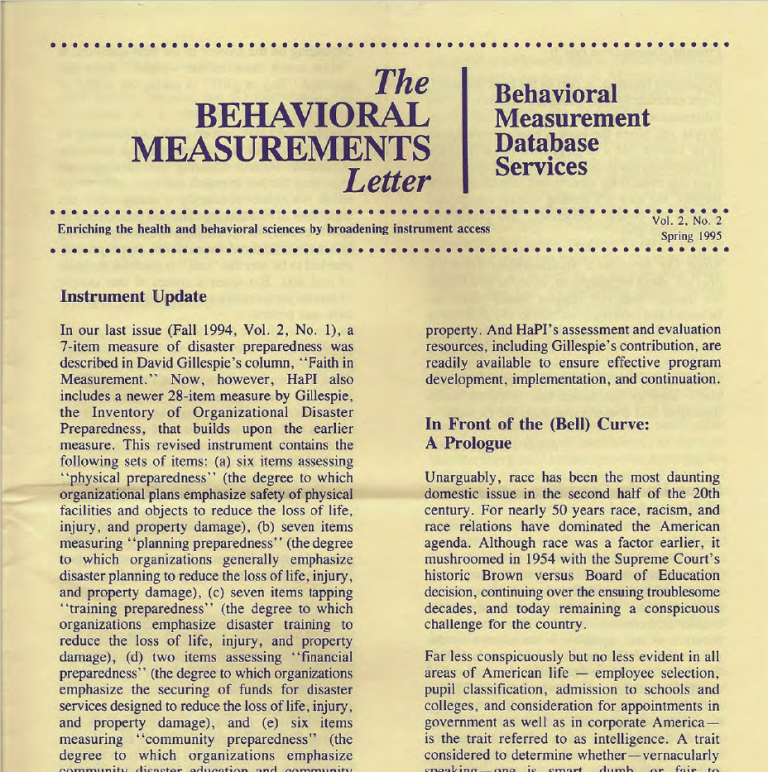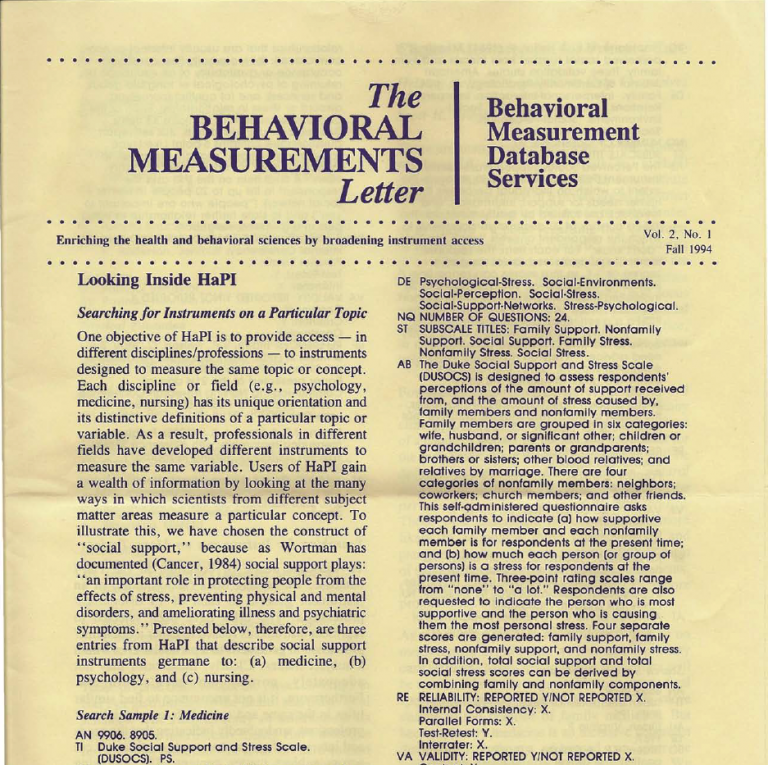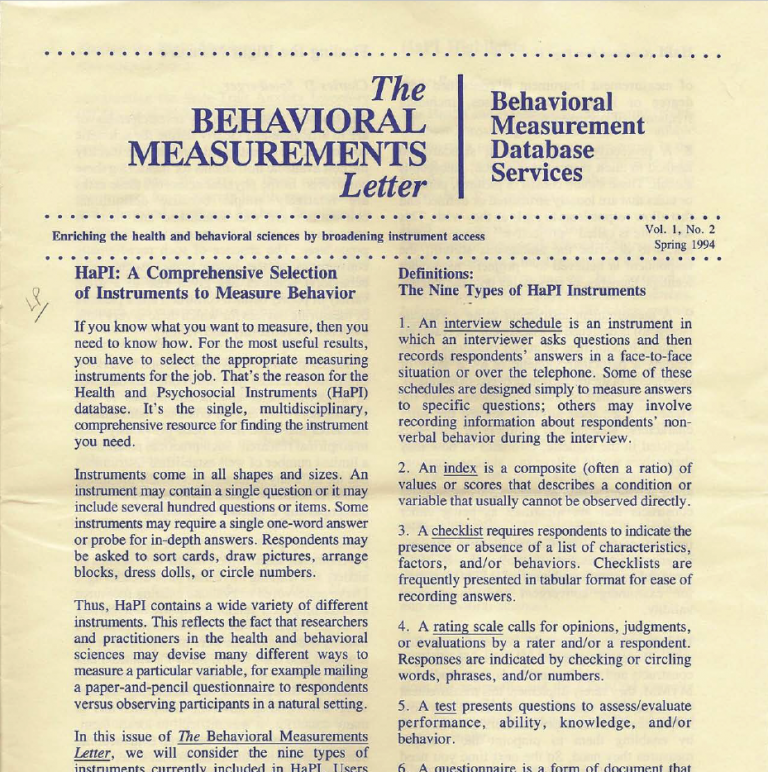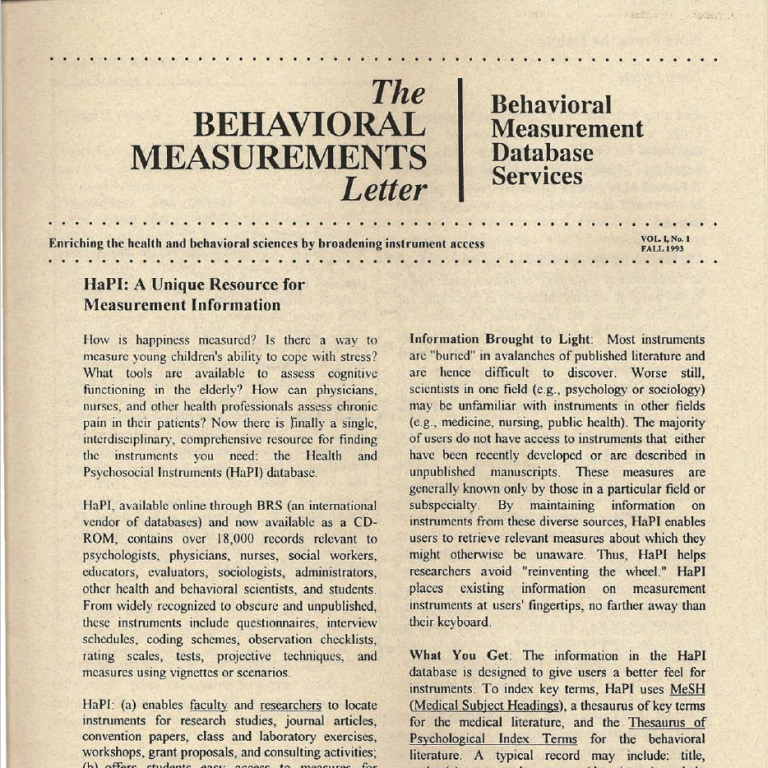Continued article from the The Behavioral Measurement Letter, Vol. 7, No.2 Winter 2002
Adrian Furnham
Do beliefs about one’s ability affect scores on an ability test? Is it important to believe that you are bright to do well on an ability/intelligence test? What do people think about their own intelligence? How do they estimate their own intelligence and that of their relatives? What determines their self-estimates?
Studies of self-estimated intelligence date back nearly a quarter of a century (Hogan, 1978). More recently Beloff (1992) provoked a great deal of interest in the effects of gender differences on self-estimated intelligence. Among her Scottish undergraduates, she found a six-point difference, with males estimating their score significantly higher than females. Additional work led her to conclude that “The younger women see themselves as intellectually inferior compared to young men…. Women see equality with their mothers, men with their fathers and men superior to their mothers. Mothers therefore come out as inferior to fathers. This pattern has been consistent each year.” Beloff argued that the modesty training girls receive in socialization accounts for these data.
Table 1
Results of Studies Where Participants Made an Overall IQ (g) Rating on Themselves and Others.
| Study | Women | Men | Difference |
| Beloff (1992) – Scotland | (N=502) | (N=265) | |
| Self | 120.5 | 126.9 | 6.4 |
| Mother | 119.9 | 118.7 | -1.2 |
| Father | 127.7 | 125.2 | -2.5 |
| Byrd & Stacey (1993) – New Zealand | (N=105) | (N=112) | |
| Self | 121.9 | 121.5 | -0.4 |
| Mother | 114.5 | 106.5 | -9.0 |
| Father | 127.9 | 122.3 | -5.6 |
| Sister | 118.2 | 110.5 | -7.7 |
| Brother | 114.1 | 116.0 | 1.9 |
| Bennett (1996) – Scotland | (N=96) | (N=48) | |
| Self | 109.4 | 117.1 | 7.7 |
| Reilly & Mulhern (1995) – Ireland | (N=80) | (N=45) | |
| Self | 105.3 | 113.9 | 8.6 |
| Measured | 106.9 | 106.1 | -0.8 |
| Furnham & Rawles (1995) – England | (N=161) | (N=84) | |
| Self | 118.48 | 123.31 | 6.17 |
| Mother | 108.70 | 109.12 | 0.72 |
| Father | 114.18 | 116.09 | 1.91 |
| Furnham & Rawles (1996) – England | (N=140) | (N=53) | |
| Self | 116.64 | 120.50 | 3.9 |
| Furnham & Gasson (1998) – England | (N=112) | (N=72) | |
| Self | 103.84 | 107.99 | 4.15 |
| Male child (1st child) | 107.69 | 109.70 | 2.01 |
| Female child (1st child) | 102.57 | 102.36 | -0.21 |
| Furnham & Reeves (1998) – England | (N=84) | (N=72) | |
| Self | 104.84 | 110.15 | 5.31 |
| Male child (1st son) | 116.09 | 114.32 | -1.77 |
Beloff’s research stimulated others to replicate these gender-related differences in self- estimated intelligence (Bennett, 1996, 1997, 2000; Byrd & Stacey, 1993; Furnham & Rawles, 1995, 1999). These studies were in four related research areas: (a) studies to replicate and explain these differences in various countries and relate national/cultural variables to them; (b) research to see if these gender-related differences can be replicated not only for overall (general) intelligence, but also for more specific and multiple intelligences; (c) work to examine whether these differences occur in estimations of the intelligence of others, notably male and female members of one’s immediate family (grandparents, parents, siblings, children); (d) research to examine the relationship between estimated intelligence and “actual” intelligence scores. Furnham (2001) reported on various such studies, all but one of which showed significant gender differences in self-rated overall IQ ranging from 3.9 to 8.6 points.
Beginning with Beloff (1992), a number of these studies looked at estimates of relations’ IQS (Furnham, Fong, & Martin, 1999). These studies showed that people believe there are clear generational effects in IQ – they believe that they are a little brighter than their mothers and certainly much brighter than their grandparents, while parents tend to believe their children are brighter than they are. In general, a half standard deviation (6-8 points) difference was found in estimated IQ between generations. Gender differences were also found for estimated IQ of relatives (Flynn, 1987). Thus people believe their grandfathers are brighter than their grandmothers, their fathers brighter than their mothers, their brothers brighter than their sisters, and their sons brighter than their daughters. Interestingly for parents estimating their children, the results were stronger for first-borns compared to those born later, indicating the possible working of the principle of primogeniture.
These results have been shown to be cross- culturally robust as the gender difference effect has been demonstrated in Asia (Japan, Hong Kong), Africa (Uganda, South Africa), Europe (Belgium, Britain, but not Slovakia) and America (Furnham, et al., 2002) as well as New Zealand (Furnham & Ward, 2001) and Iran (Furnham, Shahidi, & Baluch, 2002). Thus there seems to be a robust and cross-culturally valid finding that there is a clear, consistent gender difference in self-rating of overall intelligence, with males rating themselves and their male relations higher than females rate themselves and their female relations.
It is also interesting to note that it is very rare for people to rate their scores, or indeed those of relations, as below average (<100 IQ points). For example, it was found that students tended to believe their IQ to be about one-and-a-half standard deviations above the mean (Furnham, Clark, & Bailey, 1999) – around 120, whereas nonstudent British adults believed their IQ is to be around a half standard deviation above the norm (Furnham, 2000).
Multiple Intelligence
Over the past decade there have been many attempts to redefine intelligence and define different types of intelligence. Thus we have emotional intelligence as well as practical intelligence, for example, but perhaps the idea that has appealed most to lay people (not academics, however) is Gardner’s (1999) multiple intelligence theory. Gardner (1983) initially argued that there were seven types of intelligence:
- Verbal or linguistic intelligence (the ability to use words),
- Logical or mathematical intelligence (the ability to reason logically, to solve number problems),
- Spatial intelligence (the ability to find one’s way around one’s environment and form mental images),
- Musical intelligence (the ability to perceive and produce pitch and rhythm),
- Body-kinetic intelligence (the ability to carry out motor movements, for example, in performing surgery, ballet dancing, or playing sports),
- Interpersonal intelligence (the ability to understand people),
- Intrapersonal intelligence (the ability to understand oneself and develop a sense of one’s identity).
He suggested that the first two are those types valued at school, the next three are valuable in the arts, and the latter two constitute a sort of “emotional intelligence.”
At least eight studies have examined gender differences in estimates of Gardner’s (1983, 1999) seven multiple intelligences. The results have been consistent and give an important clue into gender differences in overall performance. Most people rate their own interpersonal and intrapersonal intelligence as very high, about 1 SD (standard deviation) above the mean, and their musical and body kinetic intelligence as strictly average, around 100. Of the remaining three types of intelligence in the Gardner model – verbal, mathematical and spatial, gender differences were found only in mathematical and spatial intelligence, particularly in spatial intelligence where females typically rate themselves six to 10 points lower than do males. No gender differences were found in self- estimations of verbal intelligence (Furnham, 2001).
Some studies have asked participants to estimate their overall (g, general intelligence) score first and then their scores on the seven specific multiple intelligences. This has made it possible to regress simultaneously the seven multiple intelligence estimates on the overall intelligence estimate. These regression studies show that people believe that mathematical (logical), then spatial, and then verbal intelligence are the primary contributors to overall IQ. This, in turn, allowed for testing the hypothesis that lay conceptions of intelligence are male normative in the sense that those abilities that men tend to be better at are those that most people consider to be the essence of intelligence. These studies showed that lay people tend to confuse mathematical/spatial and overall intelligence, thereby explaining the consistent gender differences in estimates of overall score. This means that quite possibly the often-observed and debated gender difference in spatial IQ accounts for the difference in overall IQ.
Correlations Between Self-Estimated and Test-Measured IQ
Are self-estimates accurate? In other words, is the correlation between (valid) IQ test scores and self-estimated scores high, low, or “on the mark”? This is an important question because some psychologists have suggested that if these scores correlate highly, self-estimates may serve as useful measures at a fraction of time, effort, and costs of administering and scoring IQ tests.
Various studies have found that correlations of actual and self-estimated IQ are around r = = 0.30 and that therefore self-estimates cannot serve as proxy measures of IQ (Paulus, Lysy, & Yik, 1998). One study, however, examined the effect of outliers and concluded that, if these outliers are removed, self-estimated and actual IQ correlate highly (r> 0.90).
Reilly and Mulhern (1995) note that IQ- estimates research should not be based on the “assumption that gender differences at group level represent a generalized tendency on the part of either gender to either overconfidence or lack of confidence with regard to their own intelligence” (Reilly & Mulhern). Studies do show, however, a tendency for males to overestimate and females to underestimate their score [?reference(s)] but this is related, in part, to the IQ test used.
Some researchers have tried to understand and then increase the correlation between self- estimates and test scores by using more tests on bigger populations, yet the correlations remained the same, as noted above, around r = 0.30 (Borkenau & Liebler, 1993). Perhaps the explanation should be sought in motivational factors that may be involved in the self- estimation of intelligence and that may lead to serious distortions in estimated scores. Thus a close examination of the conditions and instructions under which participants self- estimate their intelligence may provide a cluc as to how they make their self-estimates. For example, if social norms and conventions in part dictate how people respond, then anonymity in responding may reduce the distortions in self- estimates.
From Whence the Differences?
Gender differences in self-estimated IQ need to be explained because the issue is so frequently discussed, there has been an academic consensus for many years to the effect that gender differences are minimal, and since before the Second World War, test constructors have been careful to produce IQ tests that minimize gender differences.
Essentially there are three positions on the gender differences of estimates issue (Furnham, 2001). The “feminist” position was clearly articulated by Beloff (1992) in her first study, where she suggested that these differences are erroneous and simply due to attribution errors. One explanation she offers is a gender difference in modesty and humility. “Modesty-training is given to girls. Modesty and humility are likely to be connected to the over estimates of women and for women” (Beloff). Another explanation she proposes is that because IQ is correlated with occupational grade and men tend to occupy certain higher status occupations more than women (for political rather than ability reasons in her view), females tend to believe that they are less intelligent than males. There seem to be no direct data to test Beloff’s assumptions, and they look a little outdated, particularly in the case of America where students still show the same gender difference pattern despite their more equal socialization and occupational choice. However, unusual data from Slovakia may be evidence for this position. Slovakian females awarded themselves higher overall (g) and verbal scores than did equivalent Belgian and British student groups (Furnham, Rakow, Samany-Schuller, & De Fruyt, 1999). The authors offered the following possible explanation for this unique group of confident females: It may well be that under the pressure of socialist governments of Eastern Europe, the role of females in society was somewhat different from that of women in capitalist Western Europe – the former took a more active role in the economy and were socialized differently in school. In fact, Slovakian society attached high prestige to education and the government made a consistent effort to improve the position of women in society by encouraging them to obtain educational qualifications, facilitating their employment in traditionally male-dominated occupations, and even mandating a given percentage of women in its parliament. Another explanation they present is that among the various nationalities studied, the Slovakian women had the most experience in taking intelligence tests and were therefore presumably more likely to recognize that gender differences in intelligence are actually very small (Furnham, et al.).
Consequences of Gender Differences in Ability Estimates
In a series of studies, Beyer (1990) demonstrated gender differences in self-expectations, self- evaluations, and performance on ability-related tasks. Her results support the “male hubris, female humility” thesis of Beloff. Further, she argued that gender differences in self-evaluations affect expectancies of success and failure, and, ultimately, performance on ability-related tasks. Thus the importance of studies of self-estimated intelligence may lie not only in exploring lay theories of intelligence, but also in understanding the self-fulfilling nature of self-evaluation of ability. “Because of the serious implications of under-estimations for self-confidence and psychological health more attention should be devoted to the investigation of gender differences in the accuracy of self- evaluations. Such research will not only elucidate the underlying processes of self- evaluation biases and therefore be of theoretical interest but will also be of practical value by suggesting ways of eliminating women’s under-estimation of their performance” (Beyer).
Beyer (1998) reviewed studies concluding that individuals make poor self-evaluators. In one such study, the correlation between medical students’ self-rated knowledge and exam grades was found to be almost exactly zero (r = -0.01). In another study Beyer reviewed, the correlation between self-perceptions of one’s own physical attractiveness and judges’ ratings of their attractiveness was 0.22. Another study she considered found a correlation of 0.32 between how one judged ones own performance on a test of managerial skill and how independent experts rated it. “Interestingly, outside evaluators seem to be better assessors of a target’s performance that the target her/himself” (Beyer). Thus it seems that while self-estimates of intelligence may not be useful as proxy IQ tests, various studies (Paulus et al., 1998) have shown that they could be very useful in explaining some of the variability in actual test results through the self-expectation effect that Beyer (1999) discussed.
The work of Dweck and colleagues is particularly salient here (Dweck & Bempechat, 1983; Mueller & Dweck, 1998). Dweck argued that lay persons tend either to believe that intelligence is malleable (incremental lay theorists) or else it is fixed (entity lay theorists). These beliefs logically relate to goal setting, motivation, and attribution for success and failure. Further, they relate to one’s perceptions of others. While these beliefs are not necessarily related to actual ability, they can have powerful, even paradoxical, behavioral impacts. Thus Mueller and Dweck pointed out if a young person believes him/herself to be intelligent, entity theory predicts that they are likely to be less motivated to work hard to achieve their goals.
The interaction between beliefs about one’s level of intelligence on the one hand and the changeability of intelligence on the other is potentially very important. Thus entity lay theorists who believe themselves to be below average on overall or specific intelligences may shun intellectual tasks, set themselves low goals, and become depressed and ineffectual. In contrast, entity lay theorists who rate themselves way above average may be complacent and lazy, believing their “natural wit” sufficient to let them succeed at most academic and work assignments. However, lay incrementalists who are low self-raters may, if so moved, be prepared to undertake tasks or training that they believe will increase their intelligence. High self-rating incrementalists, in contrast, may also believe that they need to work hard to maintain their levels of intelligence.
Conclusion
The measurement of intelligence has always been a controversial topic. So, too, have the topics of lay people’s beliefs about their own intelligence and the extent to which it can be changed. Research relating to these topics has yielded evidence of a “self-Pygmalion effect” in that beliefs about the nature of intelligence and one’s intelligence level can profoundly influence not only how one performs on a test, but one’s personal motivations in academic and work settings throughout life (Spitz, 1999).
References
Beloff, H., (1992) Mother, father and me: Our IQ. The Psychologist, 5, 309-311.
Bennett, M., (1996) Men’s and women’s self-estimates of intelligence. Journal of Social Psychology, 136, 411-412.
Bennett, M., (1997) Self-estimates of ability in men and women. Journal of Social Psychology, 137, 540-541.
Bennett, M., (2000). Gender differences in the self-estimation of ability. Australian Journal of Psychology, 52, 23-28.
Beyer, S., (1990). Gender differences in the accuracy of self-evaluation of performance. Journal of Personality and Social Psychology, 59, 960-970.
Beyer, S., (1998). Gender differences in self-perception and negative recall bias. Sex Roles, 38, 103-133.
Beyer, S., (1999). Gender differences in the accuracy of grade expectations and evaluations. Sex Roles, 41, 279- 296.
Borkenau, P., & Liebler, A., (1993). Convergence of stranger ratings of personality and intelligence with self-ratings, partner-ratings, and measured intelligence. Journal of Personality and Social Psychology, 65, 546- 553.
Byrd, M., & Stacey, B., (1993). Bias in IQ perception. The Psychologist, 6, 16.
Dweck, C., & Bempechat, J., (1983). Children’s theories of intelligence: Consequences for learning. In S. Paris, G. Olson, and H. Stevenson (Eds.), Learning and motivation in the classroom. Hillsdale, NJ: Erlbaum.
Flynn, J., (1986). Massive IQ games in 14 nations: What IQ tests really measure. Psychological Bulletin, 101, 171-191.
Furnham, A., (2001). Self-estimates of intelligence: Culture and gender differences in self and other estimates of general (g) and multiple intelligences. Personality and Individual Differences, 31, 1381-1405.
Furnham, A.. Clark, K., & Bailey K., (1999). Sex differences in estimates of multiple intelligences. European Journal of Personality, 13, 247-259.
Furnham, A., Fong, G., & Martin, N., (1999). Sex and cross-cultural differences in the estimated multi-faceted intelligence quotient score for self, parents, and siblings. Personality and Individual Differences, 26, 1025-1034.
Furnham, A., Rakow, T., Samany-Schuller, I., & De Fruyt, F., (1999). European differences in self-perceived multiple intelligences. European Psychologist, 4, 131-138.
Furnham, A., & Rawles, R., (1995). Sex differences in the estimation of intelligence. Journal of Behavior and Personality, 10, 741-748.
Furnham, A., & Rawles, R., (1999). Correlations between self-estimated and psychometrically measured IQ. Journal of Social Psychology, 139, 405-410.
Furnham, A., Shahidi, S., & Baluch, B., (2002 in press). Sex and culture differences in self-perceived and family estimated multiple intelligence. A British-Iranian comparison. Journal of Cross-Cultural Psychology.
Furnham, A., & Ward, C., (2001 in press). Sex differences, test experience and the self-estimation of multiple intelligence. New Zealand Journal of Psychology.
Gardner, H., (1983). Frames of mind: A theory of multiple intelligences. New York: Basic Books.
Gardner, H., (1999). Intelligence reframed. New York: Basic Books.
Hogan, H., (1978). IQ self-estimates of males and females. Journal of Social Psychology, 106, 137-138.
Mueller, C., & Dweck, C., (1998). Praise for intelligence can undermine children’s motivation and performance. Journal of Personality and Social Psychology, 75, 33-52.
Paulus, D., Lysy, D., & Yik, M., (1998). Self-report measures of intelligence: Are they useful as proxy IQ tests. Journal of Personality, 66, 523-555.
Reilly, J., & Mulhern, G., (1995). Gender difference in self-estimated IQ: the need for care in interpreting group data. Personality and Individual Differences, 18, 189-192.
Spitz, H., (1999). Beleaguered Pygmalion: A history of the controversy over claims that teacher expectancy raises intelligence. Intelligence, 27, 199-234.
Dr. Adrian Furnham is Professor of Psychology at London University (UCL) where he has taught for 20 years. He holds doctoral degrees from both Oxford University and UCL. He is the author of 36 books and 450 peer-reviewed papers. Dr. Furnham is currently working on a book about managerial incompetence.
Read additional articles from this newsletter:
Refinements to the Lubben Social Network Scale: The LSNS-R
Ten Commandments for Selecting Self-Report Instruments
7-2-winter-2002

